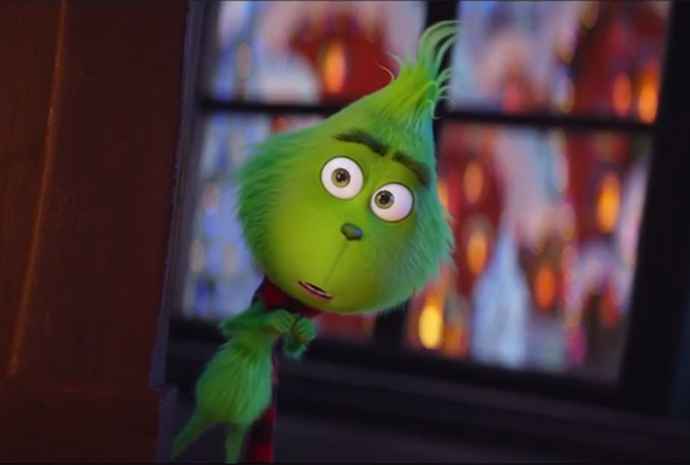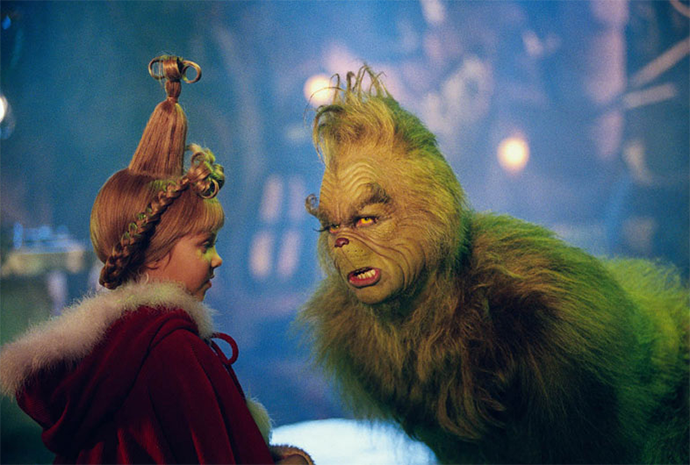Dr. Seuss’s How the Grinch Stole Christmas has always been a Christmas staple. First, it was read as a storybook. Then in 1966, there was a TV special. In 2000, Jim Carrey brought the grumpy Grinch to life in the live-action movie- Dr. Seuss' How The Grinch Stole Christmas. And now, almost two decades later, The Grinch is back to life again, in animated form with Benedict Cumberbatch’s voice.
How does this new version square off with the 2000 one?
Which has a Better Origin Story?

In the live-action movie, Grinch is an orphan often bullied in school because of his appearance by a boy named Augustus, forcing him to go over the edge. Carrey’s Grinch undergoes extreme isolation and humiliation, after being constantly taunted for being different.

Comparatively, Cumberbatch’s animated Grinch had an abridged version of his childhood. Similarly, he’s an orphan growing up, but we didn’t get to see any bullying. His main reason for being so embittered is because unlike him, other children with families received presents. Watching them happy with their gifts makes him feel lonely, and subsequently turned him against Christmas. Although it’s fun to watch, it didn’t tug at the heartstrings as How The Grinch Stole Christmas does.
Which is more Kid-friendly

Despite it having the word Christmas in the title, don’t expect How The Grinch Stole Christmas to be kid-friendly as we’d like. The jokes and humour are more geared towards the adult. Plus, the mood of the movie is more bleak and dreary, despite the over-the-top costuming and exaggerated sets. In today’s contexts, the movie actually brings out the problems that stem from bullying very well.

On the other hand, in Illumination Picture’s animated The Grinch, the kid Grinch makes you want to reach out and hug him, and the movie is visually dazzling. It creates a child-like wonder that will not only resonates with the kids but are likely to appeal to adults as well.
Who has a Better reason to Steal Christmas?

In the live action movie, Carrey’s Grinch grew up detesting those people who used to laugh at him when he was a child. They’ve grown into superficial adults, raising self-entitled kids. Now even as an adult, Grinch was still being shunned by the townsfolk, which incensed him, and that drove him to plot to ruin the Christmas festivities.

For Cumberbatch’s Grinch, he grew up wallowing in self-pity, holed up on Mount Crumpit. There didn’t seem to be one last catalyst that throws him over the edge, but more of a simmering anger that just boiled out of control, causing him to jump into the action of ruining Christmas. But then, Grinch didn’t really want to cancel Christmas, what he really wants is to be part of it, and this sends him on a mission to become Santa Claus, physically.
Both movies, although vastly different in styles, essentially tell the same story. How The Grinch Stole Christmas digs deeper into the backstory, while the animated The Grinch simplifies the story, making it easier for the little ones to grasp. Ultimately, both movies tell the story of one lonely person, shaped in his beliefs and behaviour by bullies.

While Carrey’s Grinch tells it in a sadder, more adult way, Cumberbatch’s Grinch shows it all in a burst of vibrant colours that kids can appreciate. Suffice to say, both versions of the Grinch appeal to different audiences. While How The Grinch Stole Christmas is more of a cult Christmas movie, The Grinch will definitely be the kids’ choice of Christmas movie for years to come.






